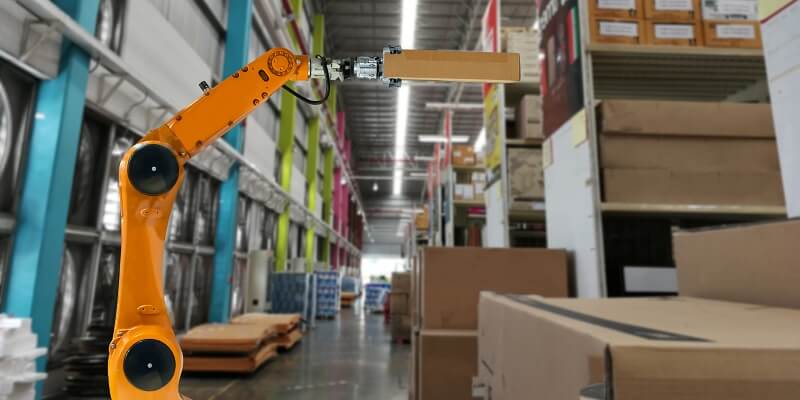The warehouse robotics market has witnessed significant growth in recent years, thanks to the increasing demand from the e-commerce industry. Warehouse robots have revolutionized the way products are stored, retrieved, and shipped. They have paved the way for faster and more efficient order fulfillment, thereby reducing human errors and operational costs.
Market size and growth projections
According to a report by Market Research Future, the global warehouse robotics market size was valued at USD 6.09 billion in 2020 and is projected to reach USD 15.67 billion by 2030, with a CAGR of 11.8% during the forecast period, 2021-2030. The market growth is attributed to the rising adoption of warehouse robots by the e-commerce industry and the increasing need for automation in fulfillment centers.
Factors driving the growth of the market include increasing demand from the e-commerce industry. The growth of the e-commerce industry has spurred the demand for warehouse robotics. With the rapid increase in online sales, e-commerce companies are under pressure to fulfil customer orders quickly, accurately, and cost-effectively. Warehouse robots automate the repetitive and labor-intensive tasks associated with order fulfilment, including barcode reading, inventory management, and sorting, thereby reducing the time required to fulfil orders and eliminating the risk of errors.
Automation of tasks in fulfillment centers
Fulfillment centers play a crucial role in the e-commerce industry, where the order fulfillment process is streamlined through automation. Warehouse robots equipped with sensors, scanners, and cameras can navigate through warehouses, read barcodes, and track inventory in real-time. This automation of tasks not only speeds up the order fulfillment process, but also frees up employees to focus on more complex tasks, reducing their workload.
Use of Collaborative Robots in Automobile Warehouses
Collaborative robots, also known as cobots, are increasingly being employed in automobile warehouses as a solution to provide a safe working environment and reduce human errors. These robots work together with workers, freeing them from doing repetitive and high-risk tasks such as carrying heavy loads or working in areas with high noise levels. The use of cobots is expected to increase in the warehouse robotics market as safety regulations become stricter and the need for precision and higher productivity grows.
Factors restraining market growth
The cost of deploying warehouse robots can be quite high, and many small and mid-sized enterprises may find it challenging to invest in automation. Not only is the cost of the robots significant, but also the cost of integrating them with existing systems, training employees to work with the robots, and maintaining and servicing them.
Cybersecurity issues
As robots become more integrated into warehouse systems, the risk of cyber-attacks increases. Hackers can gain access to robots remotely, taking control of them, or stealing data. Companies need to take necessary measures to secure their robotics systems and regularly update their software and firmware. The high cost of cybersecurity measures may be a deterrent to investing in robotics systems.
Opportunities in the Market: Integration of AI and IoT in Industry 4.0
The concept of Industry 4.0 integrates artificial intelligence (AI) and the Internet of Things (IoT) into warehouse robotics to streamline workflows using improved connectivity. This integration would mean that warehouse robots can communicate with each other and with other systems, track inventory in real-time, make accurate recommendations, and improve overall efficiency. The introduction of Industry 4.0 is expected to create ample opportunities in the warehouse robotics market in the coming years.
Market segmentation
The global warehouse robotics market is segmented based on type, payload capacity, application, offering, industry vertical, and region.
The market is classified into the following types: automatic guided vehicles (AGVs), autonomous mobile robots (AMRs), articulated robots, collaborative robots, cylindrical & SCARA robots, and others.
Based on payload capacity, the market is segmented into low (>10kg), medium (10-100kg), and high (>100kg) payload capacity robots.
The market is segmented into palletizing and depalletizing, transportation, packaging and repackaging, sorting and picking, and others, based on application.
The market is also segmented based on offerings, which include hardware, software, and services.
The industry vertical segmentation includes automotive, pharmaceuticals, food and beverages, e-commerce, consumer goods, and other sectors.
Regional analysis
North America holds the lion’s share of the warehouse robotics market and is expected to dominate the market during the forecast period. The presence of key market players such as IBM Corporation, 6 River Systems, and Locus Robotics further boost the market growth in this region. Europe and the Asia-Pacific regions are also expected to grow at a significant rate due to the increasing adoption of warehouse automation and the growth of the e-commerce industry.
Some of the key market players in the global warehouse robotics market are KUKA AG, ABB, Amazon Robotics, Fanuc Corporation, Honeywell International Inc., IAM Robotics, Siemens AG, and Yaskawa Electric Corporation.
In conclusion, the warehouse robotics market is poised to experience growth in the coming years, fueled mainly by the rapidly expanding e-commerce industry. However, there are barriers to entry, such as high deployment costs, cybersecurity issues, and the need for a continuous investment in research and development. Nevertheless, the integration of AI and IoT technology in Industry 4.0 is expected to generate numerous opportunities for the market in the coming years. It is a highly competitive market, and major players are investing in new product development and acquisitions to maintain their market position.

